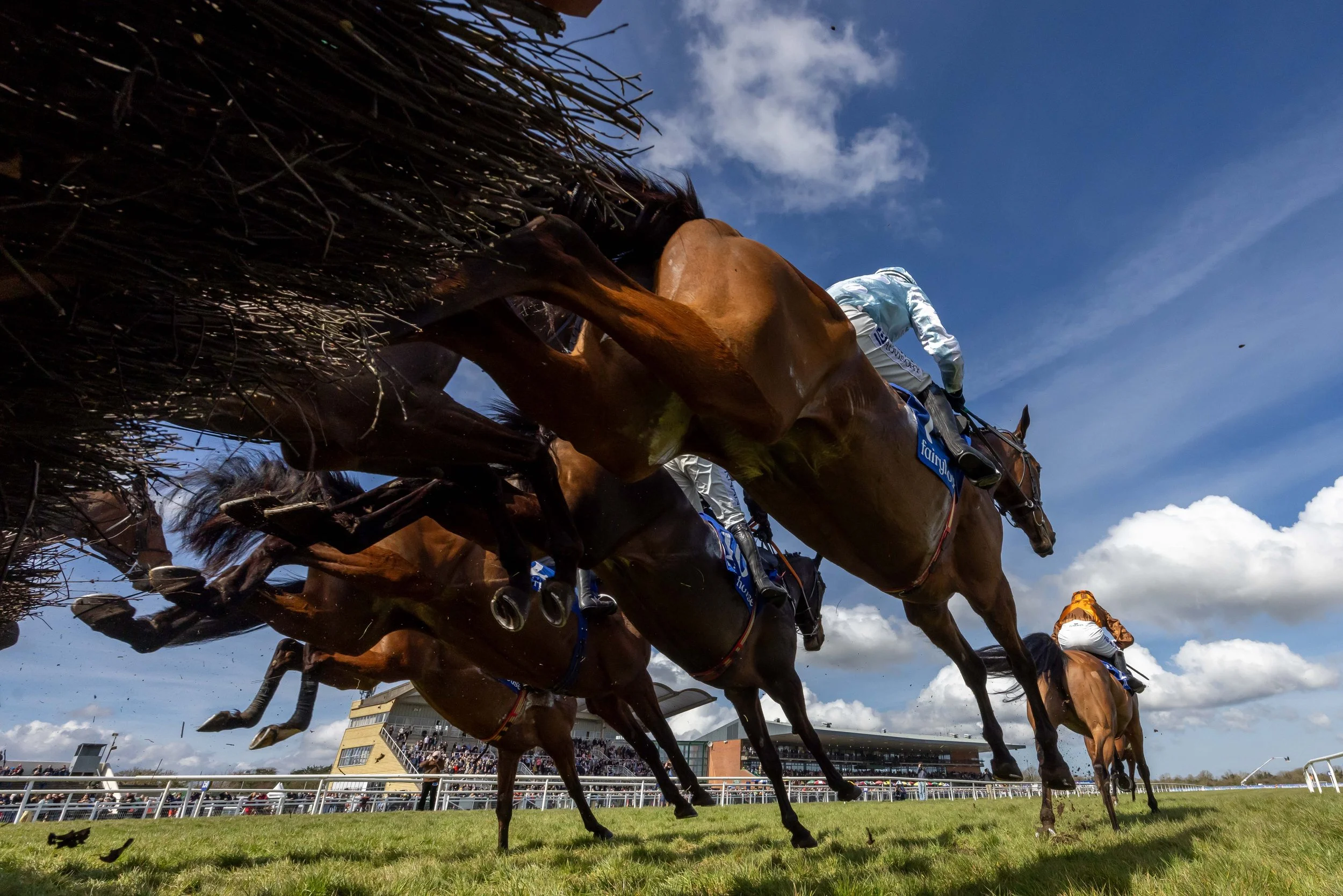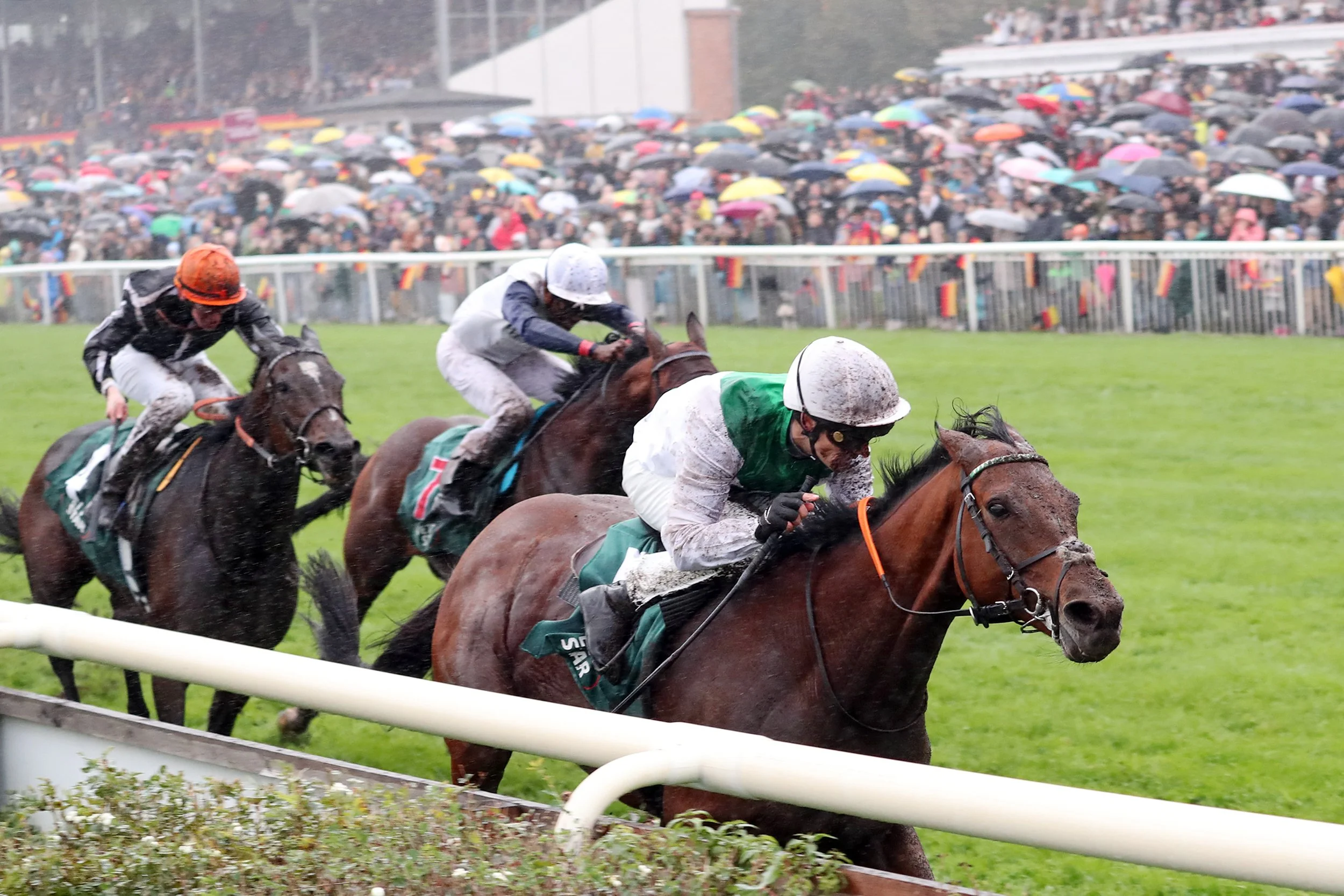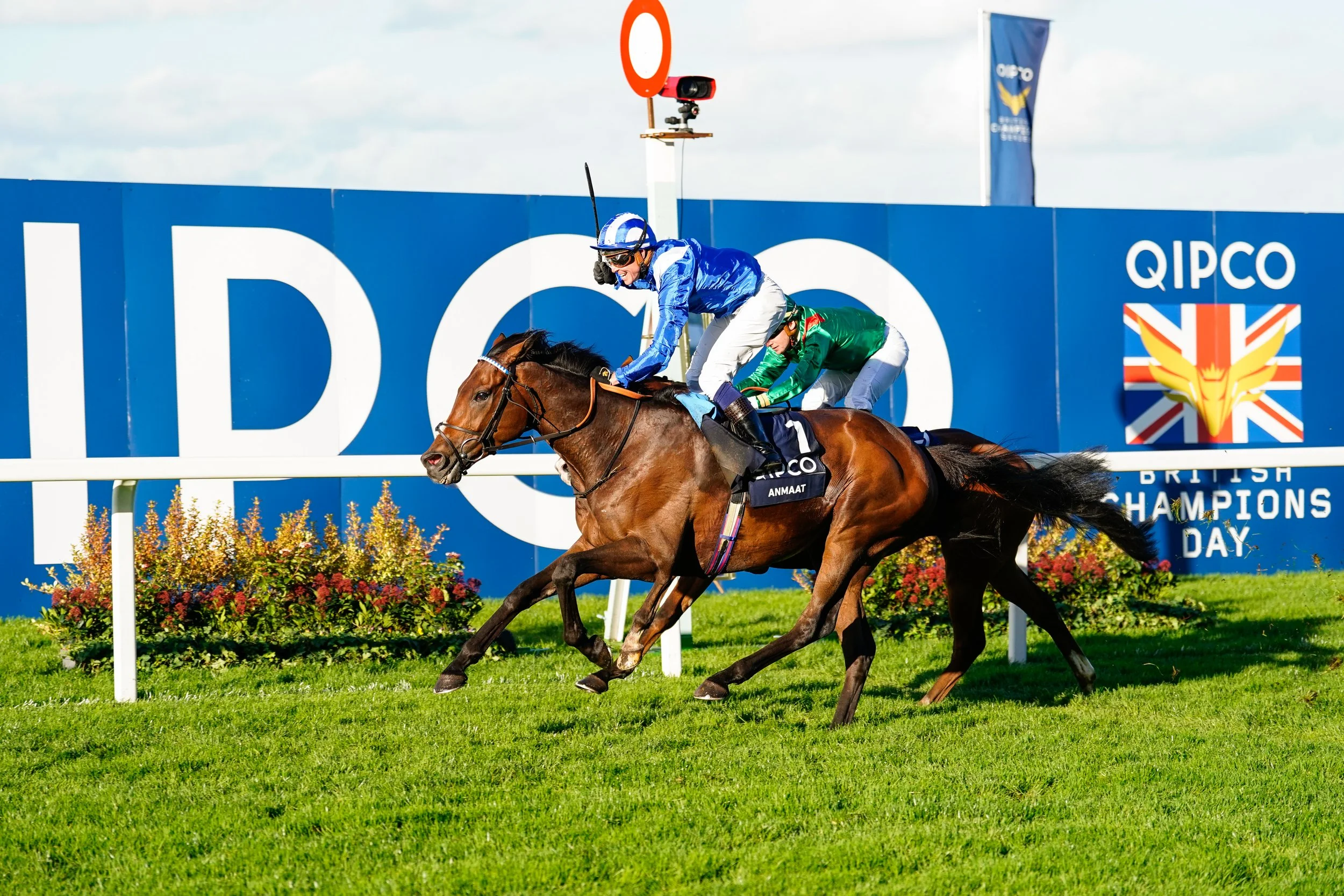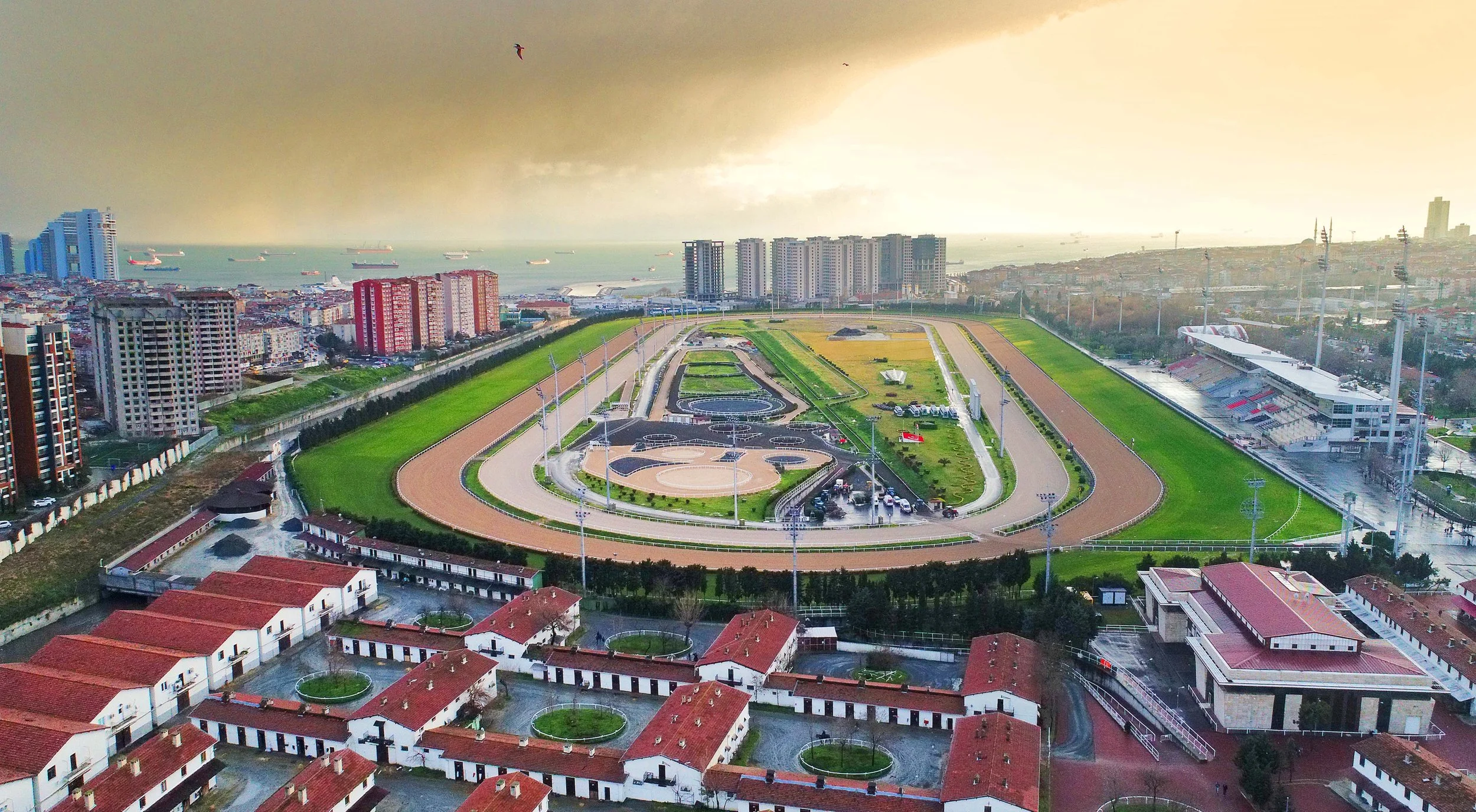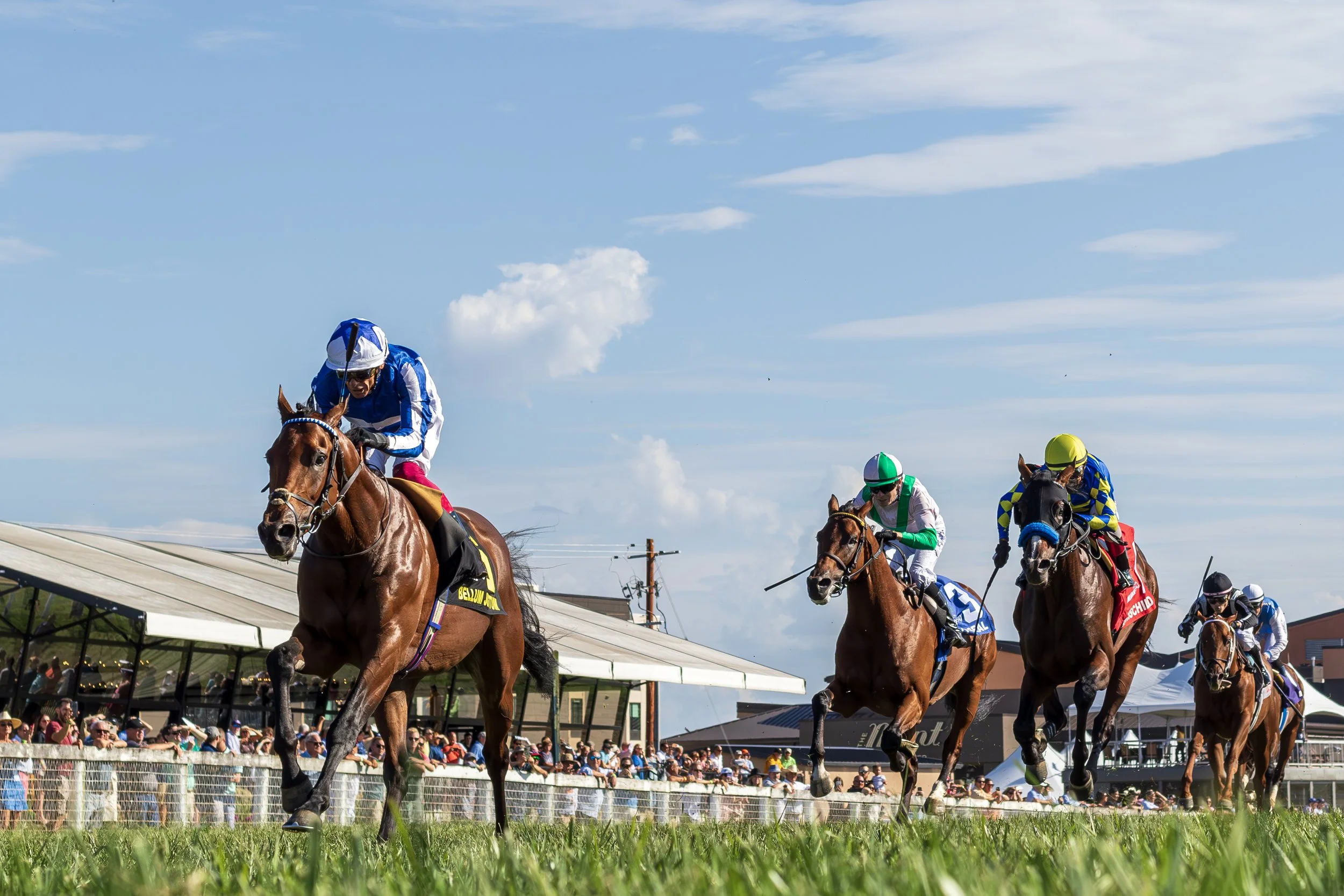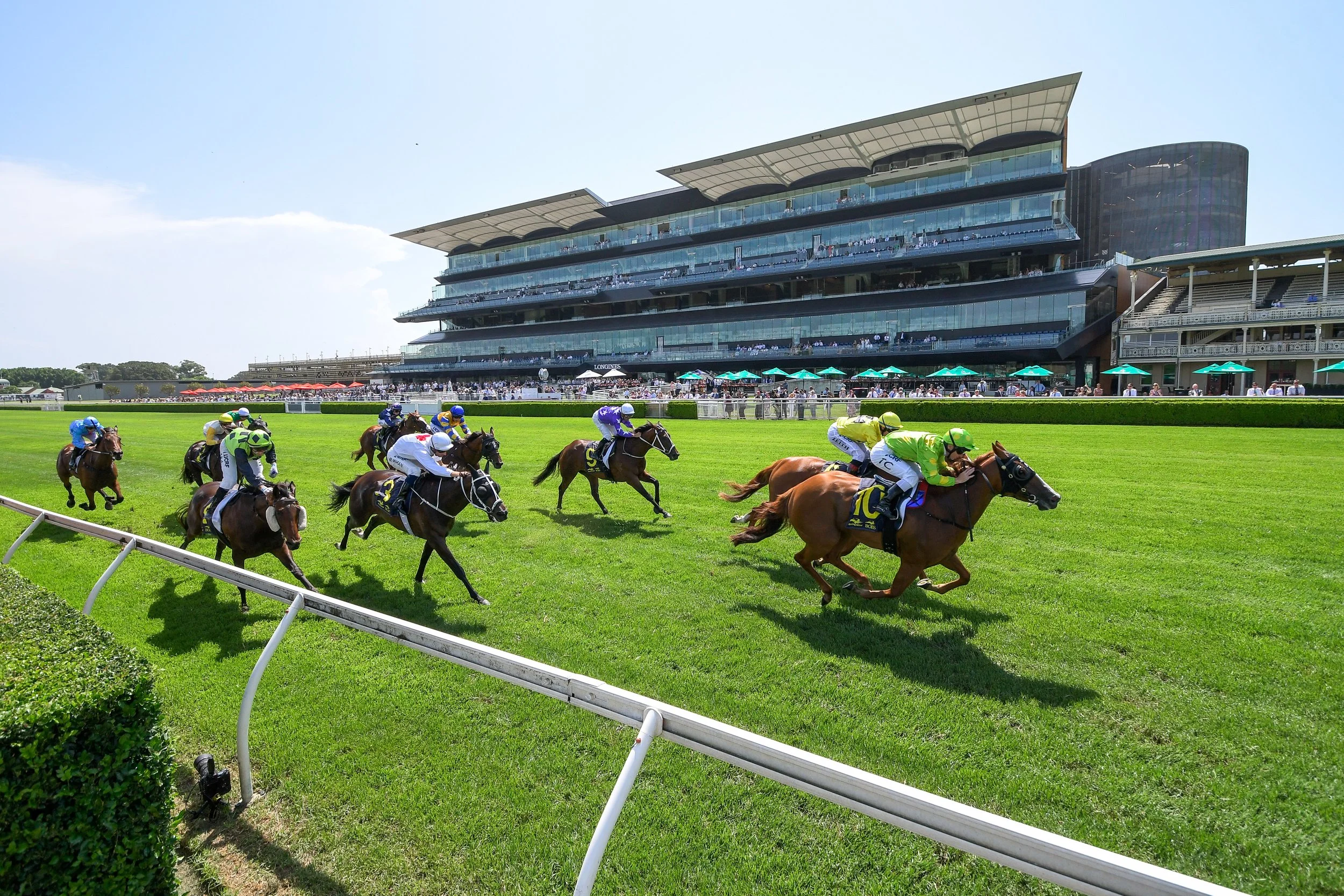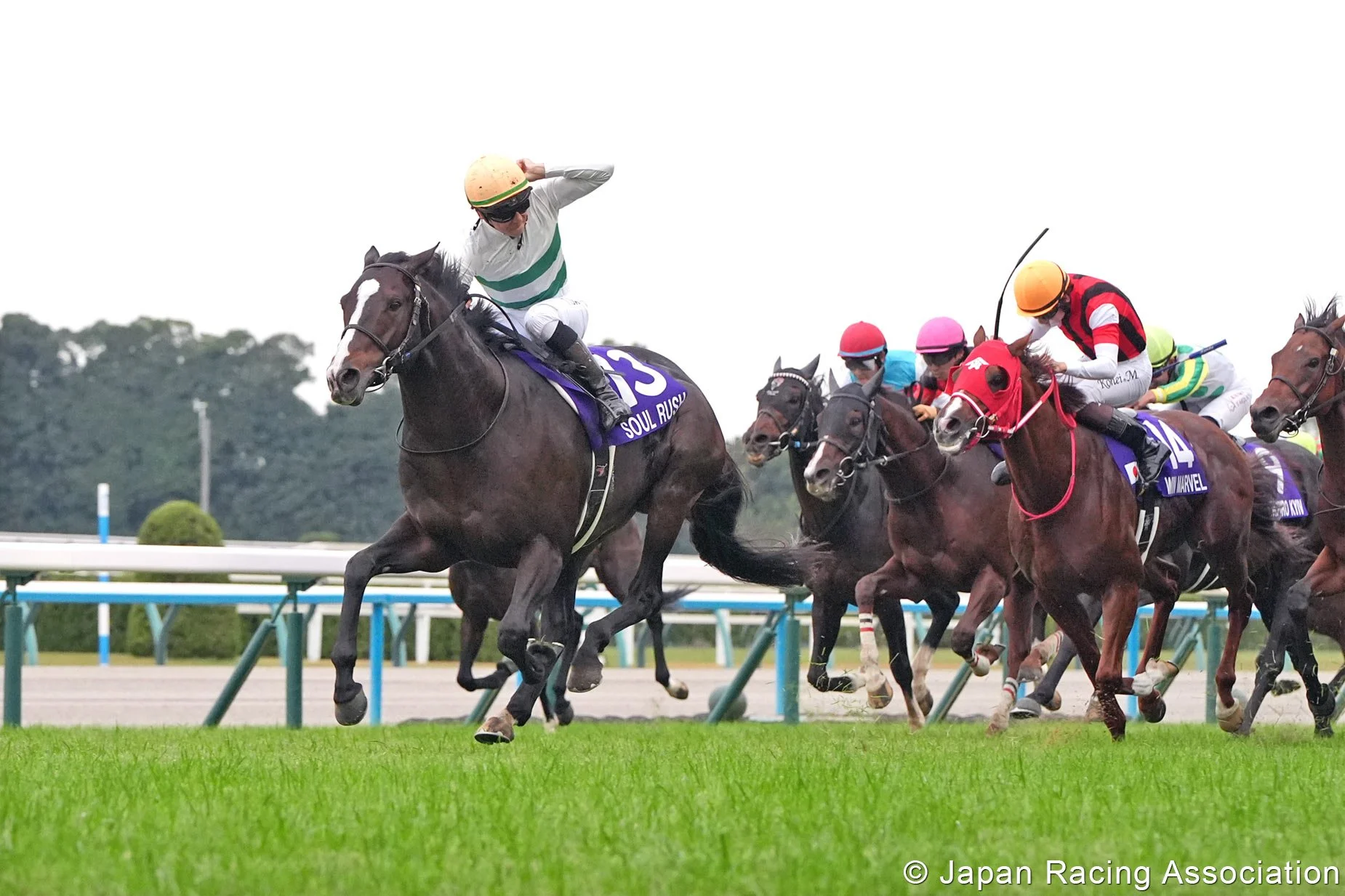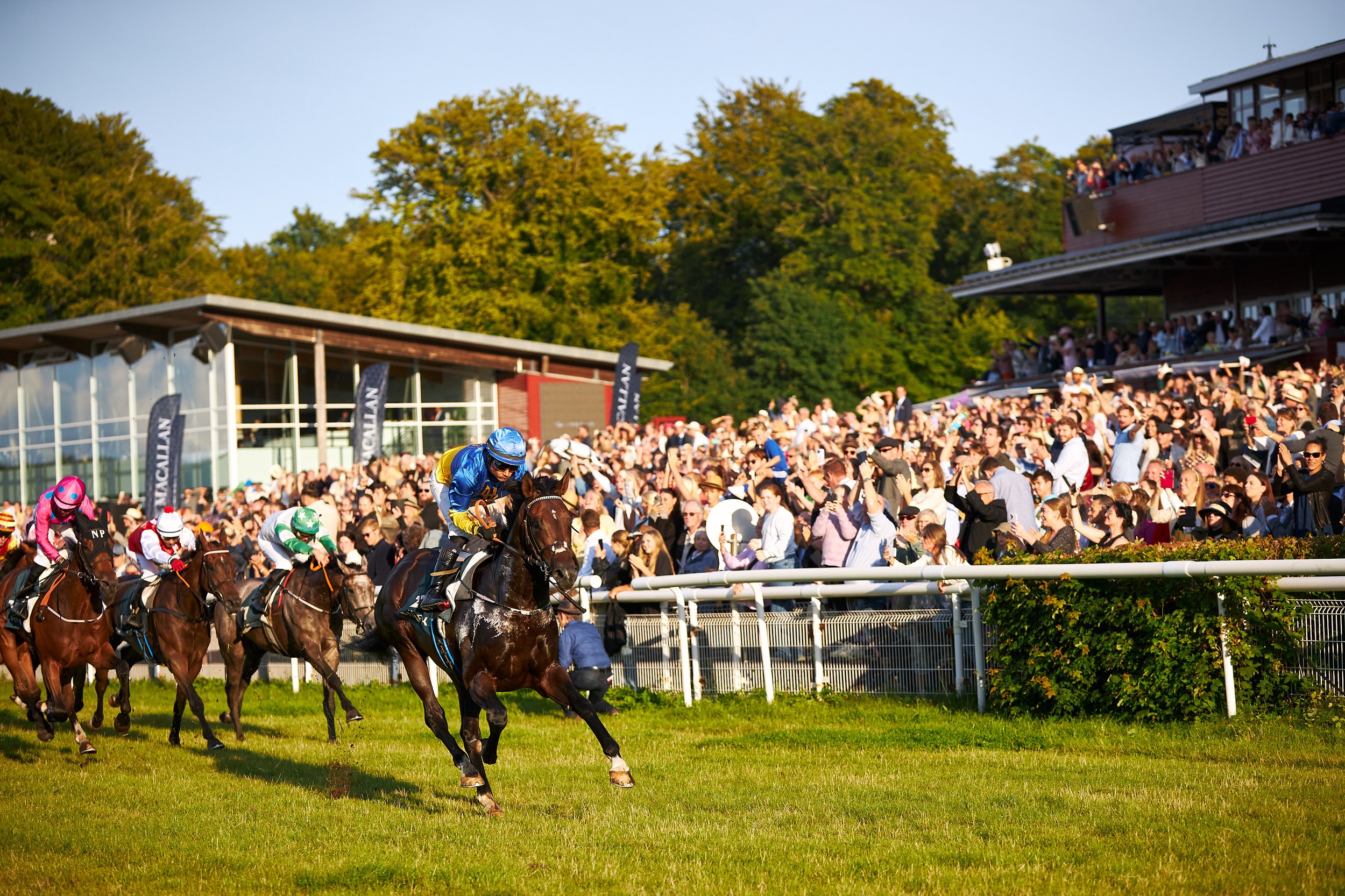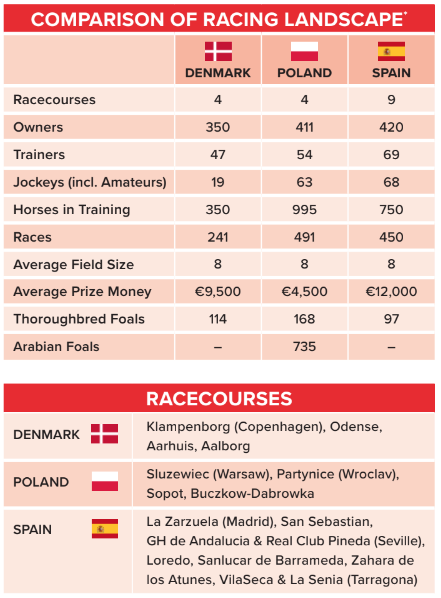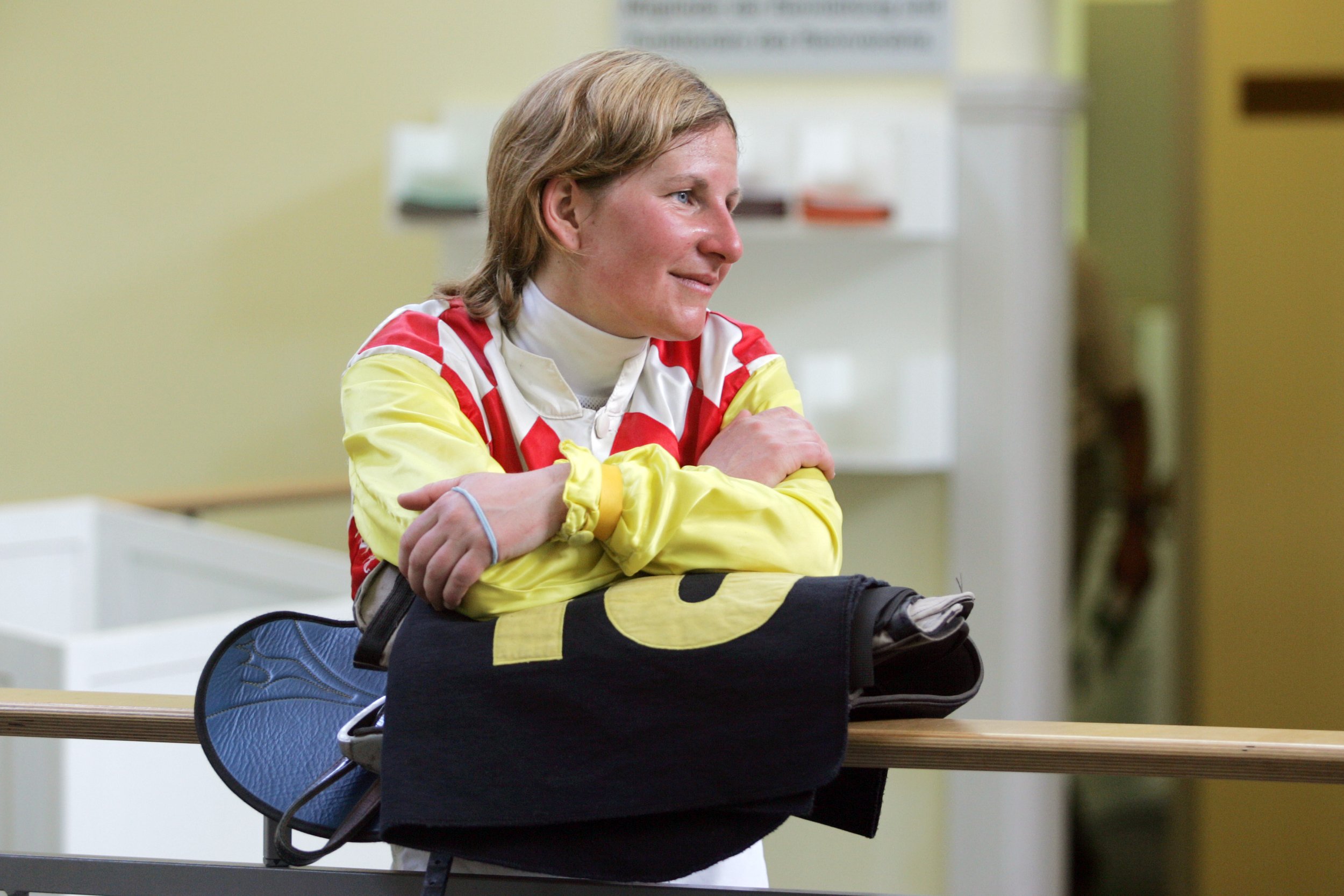Have Horse Will Travel - the international racing opportunities that trainers should be targeting this autumn
Ireland
The Irish Champions Festival takes place at Leopardstown and the Curragh 13th and 14th September respectively. The Curragh boasts the richest day of its year, with a card worth over €2.5m (£2.10m) in total. The highlights are the €600,000 (£503,865) Gp.1 Irish St Leger for three-year-olds and up, the Gp.1 Moyglare Stud Stakes and Gp.1 Vincent O’Brien National Stakes for juveniles and Gp.1 sprint The Flying Five Stakes, each worth €400,000 (£335,900).
The €200,000 (£168,000) Gp.2 Blandford Stakes, the €250,000 (£210,000) Tattersalls Ireland Super Auction Sale Stakes and two Premier Handicaps each worth €150,000 (£126,000) complete the card.
On the opening day at Leopardstown, the nine-race card features five Group races, including the €1.25m (£1.05m) Gp.1 Irish Champion Stakes 2000m (10f), the €400,000 (£335,900) Gp.1 Matron Stakes, €200,000 (£168,000) Gp.2 Solonaway Stakes, €150,000 (£126,000) Juvenile Stakes, €100,000 (£84,000) Gp.3 Tonybet Stakes, the €100,000 (£84,000) Ingabelle Stakes and two Premier Handicaps each carrying €150,000 (£126,000).
In addition to the Irish Champions Festival, the Autumn Racing Weekend will be held at the Curragh 27th and 28th September, which includes the 1400m (7f) €1m (£850,000) Goffs Million, the richest race for two-year-olds in Europe, and the richest handicap in Europe the 3200m (16f) Irish Cesarewitch, worth €500,000 (£425,000). The meeting will also include the Gp.2 Beresford Stakes (€120,000/£101,700) 1600m (8f) for juveniles, celebrating its 150th anniversary, 1200m (6f) Gp.3 Renaissance Stakes (€60,000/£50,800), and 1400m (7f) Gp.3 Weld Park Stakes (€60,000/£50,800).
Irish jumps series
For National Hunt runners, a series of seven 3300m (2m1f) 10-hurdle Irish Stallion Farms EBF Academy Hurdle races will be run in Ireland from October to December. The first is at Cork on 12th October, followed by Fairyhouse 4th October, Punchestown 13th November, Cork 23rd November, Navan 6th December, Naas 15th December and concluding at Leopardstown 29th December.
The races are open to three-year-olds which have not had any previous run under either Rules of Racing or I.N.H.S. Rules other than in Academy Hurdle races. Horses that run in any of the seven races can continue their careers in bumpers, maiden hurdles or Point-to-Points.
Jonathan Mullin, Director of Racing at HRI, explains, “Each of the races offer a Sales Voucher, similar to the IRE incentive for the owners of any eligible Irish-bred horse which wins or is placed either second or third. Each winning owner will receive a €5,000 voucher while the owners of the runner-up and the third-placed horses will each receive €3,000 and €2,000 respectively.”
Additionally, all seven races are part of the Weatherbys National Hunt Fillies Bonus Scheme, so three-year-old Irish-bred fillies that win an Irish EBF Academy Hurdle in 2025 will be awarded an additional €7,500 bonus on top of the race prize money and will still be eligible for the €5,000 scheme bonuses available if subsequently winning a bumper or a steeplechase, but not a maiden hurdle.
Germany
This season, Deutscher Galopp introduced 12 premium handicaps and 15 Premium Racedays, which included seven Group 1 racedays, guaranteeing at least €15,000 (£12,500) in handicaps and maiden races on those days.
The BBAG Auktionsrennen at Mülheim 4th October is worth €52,000 (£43,600), run over 2000m (10f) for three-year-olds offered as yearlings at the 2023 BBAG Sale, while at Krefeld 15th October is the €55,000 (£46,000) Gp.3 Herzog Von Ratibor-Rennen for two-year-olds, over 1700m (8.5f).
The Berlin-Hoppegarten card 3rd October is one of the Premium Racedays and as well as including the 2000m (10f) Gp.3 Preis Der Deutschen Einheit, €55,000 (£46,000) for three-year-olds and up, there is also a 1400m (7f) BBAG Auktionsrennen for three-year-olds offered as yearlings at the 2023 BBAG Sale, and a support card of seven other races from €15,000 (£12,500) to €22,000 (£18,500). Similarly, 19th October at Baden-Baden sees a nine-race card with the guaranteed minimum that also features the Gp.3 €155,000 (£130,000) Preis Der Winterkönigin for two-year-olds over 1600m (8f), and the Gp.3 Herbst Trophy €55,000 (£46,000) over 2400m (12f) for three-year-olds and up.
The 26th October Hannover Premium card includes the €55,000 (£46,000) Gp.3 Herbst-Stutenpreis over 2200m (11f) for three-year-olds and up and two €25,000 (£21,000) juvenile races over 2000m (10f) and, for fillies only, 1400m (7f). The Premium Racedays conclude at Munich 8th November, where the feature is the Gp.1 Grosser Allianz Preis Von Bayern over 2400m (12f) worth €155,000 (£130,000), and another €52,000 (£43,600) BBAG Auktionsrennen, this time for two-year-olds over 1600m (8f) offered as yearlings at the 2034 BBAG Sale.
Sweden
Sweden’s showcase takes place at Bro Park 12th September with a card that includes the Gp.3 Stockholm Cup International (Gp. 3) over 2400m (12f) for three-year-olds and up and worth SEK 1,000,000 (€91,700 / £76,900). The three Listed races on the support card are each worth SEK 550,000 (€50,500 / £42,350) and open to three-year-olds and up, namely the Bro Park Sprint Championship 1200m (6f), the Tattersalls Nickes Minneslöpning 1600m (8f) and the Lanwades Stud Stakes for fillies 1600m (8f).
Later Listed opportunities for three-year-olds up, each worth SEK 400,000 (€36,700 / £30,800), are the 2400m (12f) Skånska Fältrittklubbens Jubileumslöpning and the Peas and Carrots Mile over 1600m (8f) at Jägersro Galopp 5th October, and the 2100m (10.5f) Songline Classic at Bro Park 26th October.
Spain
The highlight of the Spanish season is Champions Day 19th October in Madrid, with a card that includes the Gran Premio Memorial Duque de Toledo over 2400m (12f) for three-year-olds and up, with a value of €50,000 (£42,000) and the Gran Premio Ruban over 1200m (6f) worth €40,000 (£33,500). The €40,000 (£33,500) Gran Criterium for two-year-olds is run over 1600m (8f) 26th October.
British Champions Day
Opening a card that features the British Champions Long Distance Cup (€590,000/£500,000), the British Champions Sprint Stakes ((€590,000/£500,000), the British Champions Fillies and Mares Stakes ((€590,000/£500,000), the Queen Elizabeth II Stakes (€1.36m/£1.15m), the Champion Stakes (€1.53m/£1.3m) and the 1600m (8f) Balmoral Handicap (€295,000/£250,000) is the newly-introduced Two-Year-Olds Conditions Race, worth €295,000 (£250,000), taking the total prize money on the day to €5.13m (£4.35m). Open to two-year-olds, the 1200m (6f) conditions race, like all races at this distance at Ascot, will be run over the straight course.
Turkey
The Jockey Club of Türkiye hosts seven international races in Istanbul at Veliefendi Racetrack, as part of the International Racing Festival run on the first weekend in September. The highlights are the €62,650 (£53,400) 2000m (10f) Gp.2 Anatolia Trophy for three-year-olds up, €190,000 (£162,000) Gp.2 1600m (8f) Topkapi Trophy for three-year-olds up, the €98,700 (£84,150) Gp.3 1200m (6f) Queen Elizabeth II Cup for two-year-olds, €197,500 (£168,400) Gp.3 2400m (12f) Bosphorus Cup for three-year-olds up and the Gp.3 1600m (8f) €142,400 (£121,400) Istanbul Trophy, entries closing 6th August. There is a transport subsidy for international races, $18,000 for round-trip per horse arriving from the continents of America (North and South), Oceania, Africa and Far East countries, €12,000 for round trip per horse arriving from Europe and United Arab Emirates. Any horses scratched from the race after arrival by veterinary report will still receive transportation subsidy. The Gp.3 Malazgirt Trophy for purebred Arabians over 1600m (8f) will also be part of the card.
USA
Kentucky Downs is home to America's only European-style 2000m (10f) all turf racecourse, hosting just seven days racing from 28th August to 10th September, entries closing from 16th August, when emailed expressions of interest must also have arrived for the invitationals. The feature races are the $3.5m (€3m/£2.6m) Gr.3 Nashville Derby Invitational over 2400m (12f) for three-year-olds, the $2.5m (€2.19m/£1.86m) Gr.3 1600m (8f) Mint Millions Invitational and the 2400m (12f) Gr.2 Kentucky Turf Cup Invitational of the same value which is also a "Win and You're In Breeders' Cup Turf" race. Both races are for three-year-olds and up.
Carrying $2m (€1.75m/£1.48m) each are the Gr.3 Kentucky Downs Ladies Turf for fillies and mares three-year-olds and up over 1600m (8f), the Gr.2 Kentucky Downs Ladies Turf Sprint 1200m (6f) for fillies and mares three-year-olds and up, the Gr.1 1200m (6f) Franklin-Simpson Stakes for three-year-olds, the Listed 1600m (8f) Gun Runner for three-year-olds, the Gr.2 1200m (6f) Music City Stakes for three-year-old fillies, the Gr.3 2000m (10f) Kentucky Downs Ladies Marathon Invitational for three-year-olds and up fillies and mares, the Gr.3 2000m (10f) Dueling Grounds Oaks Invitational three-year-old fillies, and the Gr.2 Kentucky Downs Turf Sprint 1200m (6f) for three-year-olds and up which is another of the "Win and You're In Breeders' Cup Turf Sprint Division” races.
Each carrying purses of $1m (€870,000/£738,000) are the Bowling Green Gold Cup Invitational 3200m (16f) for three-year-olds up, the 1600m (8f) Listed Kentucky Downs Juvenile Fillies, the 1200m (6f) Listed Kentucky Downs Juvenile Sprint, the 1600m (8f) Listed Kentucky Downs Juvenile Mile, and the 1200m (6f) Untapable Stakes for two-year-old fillies. The Listed Tapit Stakes over 1600m (8f) for three-year-olds up heads three races worth $500,000 (€437,000/£370,000), alongside the 1600m (8f) NTL Tight Spot Overnight Handicap for three-year-olds up, and the 1600m (8f) Listed One Dreamer for fillies and mares three-year-olds up. Maiden races, already the richest in the world, carry €181,000 (€158,000/£133,300) per race.
“We want to build the Nashville Derby into a race that American and European horsemen alike point to and buy horses for,” says Ron Winchell, co-managing partner of Kentucky Downs with Marc Falcone. “We’ve positioned the Nashville Derby so that it fits into a big-money circuit for three-year-old turf horses.”
The 42nd running of the Breeders’ Cup will be held for a fourth time in Del Mar, California, on the edge of the Pacific Ocean in San Diego “where the turf meets the surf”. Consisting of 14 Grade 1 races with purses and awards totalling more than $31m (€27.11m/£22.97m), the meeting takes place Friday 31 October and Saturday 1st November.
“Our return to Del Mar in back-to-back years marks the continuation of a wonderful collaboration and successful partnership, both with our friends at the track and with the greater San Diego area,” says Drew Fleming, President and CEO of Breeders’ Cup Limited. “We look forward to once again gathering where the turf meets the surf as the world’s best thoroughbreds put on an incredible show.”
“We couldn’t be more excited about hosting back-to-back Breeders’ Cup World Championships and welcoming the very best in international racing back to the town of Del Mar and the greater San Diego area,” said Joe Harper, CEO of the Del Mar Thoroughbred Club. “The Breeders’ Cup represents the pinnacle in world-class racing and the organisation’s willingness to return here again is a testament to the quality of our racing facilities, our idyllic weather, and the warm hospitality shown to our visitors by the local community.”
With 14 championship races held over two days, Future Stars Friday sees the two-year-old championships run for purses upwards of €931,130 (£783,500) and €1.9m (£1.6m). Saturday boasts nine races, culminating with the €6.5m (£5.5m) Gr1 Breeders’ Cup Classic. The “win and you’re in” series consists of 69 of the best races from around the world, from June to October, awarding each winner an automatic and free entry into the Breeders' Cup World Championships.
Bahrain
The Bahrain Turf Series is fairly new to the calendar and has seen just five renewals to date. Running from December through to February, each race carries prize money from €73,750 (£62,850) up to €91,880 (£78,200) with total and the series is designed to attract international runners rated 85-100 to compete against local Bahrain-based horses.
“We believe the time is right to build on the success of the Bahrain Turf Series and expand the international programme to incorporate our season’s premier races,” explains His Highness Shaikh Isa Bin Salman Bin Hamad Al Khalifa, Chairman of the Bahrain Turf Club. “Our most prestigious races, including the Crown Prince’s Cup and the King’s Cup, fall within the Bahrain Turf Series calendar, and are intended to make racing in Bahrain an even more attractive and compelling proposition for international visitors.”
In total, the Series of sprint and middle-distance races comprises of 12 races, six in each division, with each race carrying bonus prizes for the horses accumulating most points in their respective division.
At time of going to press the dates and 2025/26 prize monies were not available, but last year saw significant increases. In December are two 1000m (5f) and two 2000m (10f) races for horses rated 84-100 and a 1200m (6f) and 2000m (10f) race for those rated 80-100.
In January there are two conditions races, over 1000m (5f) and 1800m (9f). February, when the season concludes, sees opportunities for horses rated 80-100 at 1000m (5f), 1200m (6f), 1800m (9f) and 2000m (10f). For those seeking black type, the 2000m (10f) Gr2 Bahrain International Trophy in November for three-year-olds and up is establishing Bahrain as a premier horseracing destination. Run on turf, in 2024 the race was worth €921,858 (£785,315) in total, with €553,115 (£471,178) to the winner.
Entries close 2nd October with supplementary entry stages later in October, but there are three 'Automatic Invitation' races, for the first, second and third from The Royal Bahrain Irish Champions Stakes and the Gp.3 Strensall Stakes at York. The Bahrain Turf Club will provide air tickets for overseas connections and hotel accommodation on a room only basis. Shipment of invited horses will be arranged and paid for by the Bahrain Turf Club.
Australia
The Melbourne Cup Carnival needs no introduction and the Cup itself is only one of 10 Gp.1 racedays during the 22-day season at Flemington. The 3200m (16f) Gr1 Melbourne Cup will be worth A$8.66m (€4.93m / £4.14m) this year, with prize money down to 12th.
During the week there are three €1.8m (£1.6m) weight-for-age Gr1s, the 2000m (10f) Champion Stakes, 1600m (8f) Champions Mile and the 1200m (6f) Champions Sprint. “It is always a great thrill to host international connections who make the journey to Melbourne,” Leigh Jordon, the VRC Executive General Manager, tells us.
More recently the Sydney Everest Carnival held at Royal Randwick and Rosehill Gardens has competed for equal attention, running from 21st September to 9th November, and boasting the world’s richest race on turf, The Everest, over 1200m (6f) in mid-October at Royal Randwick and worth A$20m (€11.3m / £9.5m). The opening day at Royal Randwick features two weight-for-age races, each with a total prize of €615,840 (£520,265) for three-year-olds and up, The 7 Stakes 1600m (8f) and the Gp.2 1100m (5f) Shorts. Randwick later hosts the iconic 1600m (8f) Epsom Handicap, a Gp.1 worth €924,000 (£780,500) and on the Everest supporting card is the €3m (£2.6m) Gp.1 King Charles III Stakes over 1600m (8f).
At Rosehill Gardens, the Hill Stakes over 2000m (10f), and 1800m (9f) Five Diamonds each carry a purse of €1.2m (£1m), with the €6.2m (£5.2m) Golden Eagle over 1500m (7f) the showpiece in November.
Japan
The JRA offers travel incentives for particular overseas horses for Group 1 races and for invited overseas horses for the Japan Cup. The JRA provides air transport costs for the horse and two attendants, the owner, trainer, jockey, and their spouse/partner, and five nights’ accommodation at a JRA designated hotel.
All Japanese Gr.1s are free to enter, or by free invitation, and carry the same declaration fee of €20,200 (£17,500), with significant bonuses from first down to last for the participating winners of designated Gr.1 races globally. The 2400m (12f) Japan Cup is run at Tokyo in November for a purse of €7.3m (£6.3m), Also in November, at Kyoto, the 2200m (11f) Queen Elizabeth II Cup for fillies and mares carries a purse of €1.9m (£1.6m), and The Mile Championship is worth €2.7m (£2.3m). Run on dirt at Chukyo Racecourse, the 1800m (9f) Champions Cup has a total value of €1.7m (£1.5m).
Smaller nations - the challenges facing trainers in Denmark, Poland and Spain
In the last issue, we featured a table of champion trainers and jockeys across Europe, compiled by Slovakia’s Dr Marian Surda. In this one, we have selected three of those champion trainers—those of Denmark, Poland and Spain—and tried to find out a little more about them and what it is like to be at the top of the training tree in their respective countries. While there is plenty of positivity and success to report, the challenges of sustaining viable businesses in the ‘smaller’ racing nations of our region, even for those at the top of their profession, are evident. It is a salutary finding that two of the three are looking to move on from the countries in which they have made their names.
Of our chosen trio, Guillermo Arizkorreta was the most highly ranked (by earnings), finishing 7th of 19 with earnings of €886,250 achieved through 61 winners at a strike rate of 19.3%. Niels Petersen not only finished 9th with his €311,537 in Denmark, but he also finished 8th as champion in Norway, with a further €443,856. And Cornelia ‘Conny’ Fraisl, one of only two females on the list, came in at No 14, earning €131,791 from her 50 wins in Poland.There are many similarities between the three. All happen to be of a similar ‘vintage’, being in their late 40’s or 50’s.
Denmark has the fewest horses in training but has ready access to those trained in neighbouring Sweden and Norway. The number of trainers among whom these horses are divided are roughly comparable, as are the numbers of their owners. There is some disparity in prize money, with Poland some way adrift of the other two countries. None has a thriving thoroughbred breeding industry, producing limited numbers of foals and therefore relying on foreign-bred imports and foreign-trained runners to achieve the near-identical average field sizes of eight runners per race.
Denmark has one thoroughbred-only track (Copenhagen’s Klampenborg) and three dual gallop and trotting courses. In Poland, Sluzewiec—the main track at the country’s capital—is joined by three others, including Wroclav (where most Polish jump races are run) and the seaside track at Sopot. Spain has four traditional tracks, headed by La Zarzuela in Madrid and, in addition, has three beach racecourses and two ‘pop-up’ tracks.
NIELS PETERSEN
Niels Petersen can claim a unique achievement among current European trainers, in that he is Champion Trainer not only in Denmark, but also in Norway. While Petersen was born and raised in Denmark, he has lived in Norway for the past 25 years, from which base he has stewarded a stellar training career. He has earned the title of multiple champion trainer in all three Scandinavian countries, with combined annual prize money often exceeding €1M and peaking at around €1.7M. Over the years, he has garnered 788 winners in Scandinavia, at a strike rate of around 16%.
Petersen is a prolific winner of Scandinavia’s richest race, the Group III Stockholm Cup International. Square de Luynes ran up a hat-trick of wins.from 2019 to 2021, and Bank of Burden was a four-time victor in a long career. “My most consistent horse was probably Bank of Burden, but my best horse has been Square du Luynes. The Racing Post called him ‘Frankel of the Fjords’”!
Asked for his view of the best trainers in Europe, he says, “People like to say it’s a numbers game, and of course it is, and I know they have the firepower; but the way Aiden O’Brien and John Gosden place their horses, and the level they maintain year after year is just amazing and fantastic to watch. And I greatly admire Karl Burke. To have bounced back and actually raised his game, as he has, after all he’s been through…”.
As for the riders: “Frankie Dettori is special, of course, and I think William Buick, whom I know very well, is a fantastic jockey”. And turning to racetracks: “Ascot and Longchamp are absolutely fantastic tracks, and here in Scandinavia, Bro Park is very level and fair”.
Petersen’s move to Norway was by way of circumstance, not planning. Having completed his education and military service, he worked in Baden-Baden, (alongside friends who included jockey William Buick’s father) for a couple of years, before returning to his homeland, where he suffered a serious riding accident. Forced to seek work opportunities which did not involve riding, his knowledge of the German language came in handy, and he was asked to accompany Scandinavian-trained horses when they raced in Germany. There he met a Norwegian trainer who invited Petersen to join him in Norway to help train his jump horses.
Last year and the year before, Petersen operated a satellite yard in Denmark, (just as once he did also in Sweden). Around 15 of his 55 horses were based at Klampenborg racecourse, and in both those years he claimed the Danish championship. However, despite that success, adverse exchange rate movements have led him to abandon the Danish base. “The Danish customers actually preferred to put the horse up with me in Norway. I haven’t lost any clients, and all their horses I have with me in Norway now.”
Petersen is quick to praise the integrated race planning across the Scandinavian nations, making it practicable for trainers to map out campaigns for their horses. So, for example “if you have an outstanding miler, you can target all the big mile races, more or less.”
Securing owners in any one country is challenging enough—how does Petersen approach the task of finding owners in three countries? He is clear that the trainer’s job is not simply to train the horses—the social component is also vitally important. For example, the path to Dubai for its Carnival is a well-trod one—its purpose for Petersen being as much to enrich social relations with and amongst his owners as the pursuit of prize money.
“I’ve got to make people enjoy the hobby I can provide them with. You do sacrifice a lot of time in doing that. But when you’ve sat on the beach and shared a bottle of wine in your swimming trunks, you become better friends!”
The travel and the socialising place a premium on having excellent staff back at base and has been fortunate to have had a long-standing assistant in the business in the shape of his elder sister. “I make sure that my staff are well paid, and I’m strict in observing proper working hours. It has become more difficult to find good staff, but word of mouth has ensured we have an excellent team, including a number from South America”.
Petersen has noticed a reduction in horses in training in all three countries. “I’m a bit pessimistic as to the future of racing here, especially in Norway, because our government is not supporting the industry at all. It classifies it as a hobby and, unlike in Sweden and Denmark and elsewhere, you cannot own horses as part of a business. It means owners have to pay 25% VAT on top of imports, which they can’t get back.”
Dubai’s allure is, of course, all the greater in the contrast it provides to the long, harsh Scandinavian winters. Petersen rues the fact that, from November to April, the Scandinavian climate renders virtually impossible the effective preparation of horses and, despite his huge success there, he has an eye out for opportunities abroad. “I would like to say I’m not looking for something outside, but I am. I live and breathe Scandinavian racing, but do I see myself here in five years’ time? I don’t think so. I don't see myself being here in five years’ time. I'm only 51 years old—not even at my peak—and I want the opportunity to challenge myself where I know I should be: on the bigger international scene”.
Until then, Scandinavia has given Petersen many special memories. What was his best day? “In Denmark, on Derby Day 2021, I had runners in seven races, and I won all seven of them!” If Square de Luynes was ‘Frankel of the Fjords’, then, after that ‘magnificent seven’, one could almost be forgiven for dubbing Niels Petersen ‘Frankie of the Fjords’.
CONNY FRAISL
Fraisl’s rise to the top in Poland has been meteoric. Her first year with a public trainer’s licence was as recent as 2020, when, with 44 winners, she finished second in the trainers’ table. Two years later, she was crowned Champion, with 50 winners. Fraisl is alone among our trio in concentrating almost exclusively on Arabian, rather than thoroughbred racing.
“I was born in beautiful Salzburg, Austria”, she explains. “My grandparents had a little farm and, when I was three, my dad bought me my first pony. It was a ‘typical’ stubborn Shetland Pony; and once I’d landed on the ground several times, I asked my dad to ‘sell this pony and buy me a guinea pig’!”
But the lure of riding returned a decade later. “Close to the place I lived, there was a training stable for trotters where I spent every free afternoon, all my holidays from the age of 13. Racing always was fascinating for me. Flat racing In particular but, due to the fact that there was no flat racing stable in my area, I stayed the next seven years with trotters. But I always had an eye on flat racing and, in 1996, when I moved from Salzburg to Vienna, I was finally close to a racetrack where regular flat races were held. So, I made contact with one of the trainers, started to ride regularly in daily training there, gained my amateur licence and bought my first own racehorse.”
“I had the possibility of riding work in Florida for several weeks, and I could learn a lot about starting young horses there. During my earlier days in the trotting stable, I learned a lot about intensity of training, interval training, feeding and the general needs of racehorses”.
As an amateur, Fraisl notched up around 25 winners in Austria and Hungary, where she rode for two seasons for different trainers. Turning professional in 2006, she has amassed 208 winners in the saddle to date, riding in countries as far afield as Malaysia.
For her training career, Fraisl moved to Poland, her then-partner’s homeland, where she set up a private breeding and training facility in Strzegom, not far from Wroclav. “At the beginning, we had in training only homebred horses, thoroughbreds. Step by step, one by one, came some Arabians from Austria, Germany, Sweden.... and when they started to win more and more races. Owners from different countries recognised the job we were doing and sent us more and more Arabian horses to be trained in Poland. Today, she has some 80 boxes and 40 places for youngstock. She is an advocate of turnout for horses’ well-being. “Twenty-five huge grass paddocks can be used all year round and all of our horses—including the racehorses—enjoy several hours outside every day. This is the most positive aspect for mental health. We also have an indoor arena and a horse walker as well as many possibilities to ride out into fields and forest to create the most individual training for our horses as possible”.
These days, Fraisl continues to ride out for nearly all the lots. “This is the best possibility for me to see how the horses in training work, how they behave—simply to ‘feel’ them”.
However, in Fraisl, we find another champion trainer wanting to move on from the country of their triumphs. “Actually we are dramatically reducing the number of our horses, and we are not accepting new horses and owners. The reason is that I am leaving Poland soon and will stop my job as a trainer here”.
Fraisl cites a multitude of reasons for this bombshell decision which, she says, she has taken after lengthy consideration. “The number of foreign Arabian horses—as we mainly have them in training—is also getting smaller and smaller. This means that we are forced to enter three, four or five horses from our stable together in one race, or that race will be cancelled. This makes no sense for us and our owners any more”.
Stagnant prize money and rising costs (of staff, transport, feed, bedding and veterinary and blacksmith services) are another factor. In addition, “there is a big lack of work riders. Most trainers work with a handful of enthusiastic amateurs, mainly young girls, who come to ride some lots before school or study or during holidays”. Fraisl also rues the talent drain of the best jockeys in Poland to other countries. She claims that drug and alcohol misuse is a real issue amongst riders and also that black-economy practices are common in the capital, with staff being employed without legal papers or insurance. “We have all our staff employed on a legal basis, and this is why we are the most expensive stable in Poland. We are already tired [of] explaining to the potential new owners why the prices of others are much lower—that's why we finally decided to close our training stable”.
These points were put to the Polish Jockey Club (PJC) racing secretary and the EMHF executive council member, Jakub Kasprzak. Kasprzak points to the fact that Poland is not alone in facing economic challenges, with high inflation being experienced generally across the continent. “It is true that prize money has not risen for some years, but it still compares favourably with that in, for example, Czechia or Slovakia. We are currently trying to support breeders and owners of Polish-bred horses. We have put in place a five-year programme to help this group of people. Ms Fraisl’s yard has 95% foreign-bred horses, so she is unable to participate in that programme. We have been paying transport only to horses to travel to Sopot (just four days’ racing per year) because there are no horses in training within 100km of that racecourse.”
“It is true that Polish riders, of all levels of ability, will often seek happiness abroad. But a shortage of racing staff is something that is being experienced throughout Europe. We are now seeing many staff coming from countries such as Kyrgyzstan and Kazakhstan. However, I don’t recognise her point about insurance and illegal workers. Every rider MUST have official insurance to be licenced. We at the PJC are very exacting about it. And as to drug and alcohol problems, every rider has a medical control before the start of a race. If the medical officer sees anything incorrect, he will report it to the stewards. Two years ago, one rider was suspended for one year for being drunk on race day”.
Where will Fraisl relocate to? “Time will tell. I hope to find a nice place where I can continue my work with Arabian horses.”
Fraisl has not been averse to sending horses abroad to compete ‘whenever it makes sense’. Indeed it has been the forays abroad that have provided her with her most treasured racing memories. “As key moments, I would mention the experience [of taking] part and finishing fifth in the UAE President Cup - UK Derby in Doncaster this year with Bahwan and especially our first Group winner last year in Jägersro, Sweden. For me as a trainer, this was the first Group race abroad. For our young stable jockey it was the first big chance to ride a Group race and show his talent abroad so we said ‘let's go and try’. We had no idea how the colt would do on a dirt track and without the whip (in accordance with the rules in Sweden). In the event, it was the first Group win for me as trainer, for our jockey, and for the breeder....it was an unforgettable day for all of us”.
GUILLERMO ARIZKORRETA
One man has enjoyed a stranglehold on the Trainers’ Championship in Spain for over a decade. Guillermo Arizkorreta first topped the table in 2012 and has remained there ever since.
By contrast with the other featured trainers, Arizkorreta trains at shared facilities, with some 25 others, at the La Zarzuela racetrack, very close to Madrid. It helps contain costs and has in turn contributed to the fact that Arizkorreta’s owners have enjoyed an enviable return on their annual costs, of over 75%. “It is very easy for the trainer. The owner pays €200/month to the racecourse, and it includes stabling, water supply, electricity, use of gallops, etc. Overall, having a horse in the yard costs around €1500/month, all included. It means that it is not that difficult to cover the cost of having a racehorse. On average, my horses have earned €13.500/year since I started”.
His operation supports some 70 horses in training and a workforce of around 25. “We have very nice staff, from many countries: Germany, Chile, Czech Republic, Italy, Nicaragua, Bolivia. As everywhere, there is a shortage, and it is not easy to find good riders. We have around 17 full-timers who work approximately 40 hours a week, a couple of part-timers, and some jockeys who are self-employed. The staff that work full-time work one weekend in two and the same for the evening stables. The basic wage for a full-time rider is around €19.000/year”.
“I started in a pony club in Oiartzun (close to San Sebastian) which was owned by a racehorse owner. There I met (four-time French Champion jockey) Ioritz Mendizabal, who had a keen interest in racing; and we started to ride racehorses in our local track in San Sebastian. From then on, I started following Spanish racing, and afterwards I started to follow racing and breeding around the globe, which became my passion”.
Arizkorreta singles out three key events in his rise to the top. “First, being able to compete in the FEGENTRI series as an amateur rider opened my eyes, and I was lucky to ride in many countries. Secondly, after finishing my degree, I spent nearly six years working as [an] assistant in the UK to Mr Cumani and in France to Mr Laffon Parias; and I learned a lot with them.
“Lastly, Madrid racecourse was closed between 1996 and 2005, and I was lucky to be ready to start my career at the same time as the racecourse reopened. I was known as an amateur rider in Spain, and all the background from my experience abroad helped me a lot to get some clients in very exciting times”.
“We have won 878 races from 4,450 runners. In Spain, we have won all the major races and probably our biggest achievement abroad was to win a Gp3 and a Gp2 on the same weekend in Baden Baden in 2021”.
Loyal support from some of the country’s biggest owners has been a hallmark of Arizkorreta’s career. “I have a good bunch of owners. The majority of them have been with the yard for a long time. At the moment, we have around 20 different ownership entities—33% sole ownership and the rest partnerships. The majority of them used to come racing when they were children and have a good knowledge of the sport”.
Arizkorreta has not been shy of campaigning his horses abroad and has reaped healthy rewards, capped by that dual Group-winning day in Germany. “Since I started, I have always tried to race as much as possible abroad. We have had 112 winners abroad—mainly in France, but we have also won in Dubai, Germany, Morocco and Switzerland; and we have had runners in Saudi, Sweden, UK, and Italy”.
“I feel we have done pretty well abroad, and in the right races, our horses are usually competitive”.
The trainer has much that is positive to say about racing in his country. “Madrid Racecourse is our ‘shield’, classified, as it is, as a monument. It is a fabulous racecourse, with lovely stands, a good turf track and a good crowd of people every meeting. It is very close to the city centre and is a track definitely worth visiting. Prize money could be better for the big races but in general is good, especially for the low-grade races. Being close to France helps us find suitable races for some horses”.
As to what could be improved, Arizkorreta would welcome improved planning of the race programme and greater unity between trainers, jockeys, and owners to “push in the same direction and to improve the basics of our industry”. And financial structures also mean that there is not the opportunity to access horse walkers or equine swimming pools.
All in all for Arizkorreta, the future, if not stellar, looks stable. “I think in five years’ time we will be in a similar position. Things could be much better but, realistically, with politicians not giving us the tools to develop the betting and our industry; it is hard to imagine an improvement in the short term. We need them to make a long-term plan for racing and breeding and to consider it as an industry that can create wealth and employment in many areas. Since 2005, the ruling government has helped us with prize money, which covers nearly all the races run in the year; and I see no reason why it should change, especially in Madrid.
“We have some lovely racecourses, which are always attended by a good crowd. In our biggest racecourse in Madrid, the weather is usually lovely, and it is becoming very popular in the city. There is scope to improve in many areas, and I can see it being one of the nicest racecourses in Europe. San Sebastian needs more support from the local government, but it is a historic racecourse in an amazing city. And I hope Mijas racecourse will reopen at some point”!
It was heartening to find that at least one of our ‘smaller nations’ champion trainers shows no signs of wishing to leave the country.
New Spanish beach race festival unveiled at meeting in Germany
Article by Paull Khan
There will be a spanking new venue for official beach racing in Spain this year when the Andalucian village of Zahara de los Atunes opens its doors to thoroughbred racing on Saturday October 29th, the middle day of an attraction-packed three-day beach festival, bookended by jazz concerts and polo. Long known for its beach-bar music scene, horseracing will now be used in Zahara in an attempt to prolong the tourist season in this southernmost part of Spain until the end of October.
The Costa de la Luz now boasts two beach tracks, with the venerable Sanlucar de Barrameda an hour-and-a-half drive up the coast.
Zahara’s stunning straight beach will accommodate races between 1400m/7f and 1800m/9f.
Plans for the Zahara festival were unveiled at this year’s annual meeting of the European Beach Racing Association, which took place in Cuxhaven, on Germany’s north seacoast. Delegates had been privileged to witness the famed Duhner-Wattrennen races, which have been staged on the vast beach for the past 120 years. An attentive and happy-paying crowd of 13,000 attended this year’s renewal, despite poor weather. The programme was varied, with trotting (mounted and sulky) and gallop races for warmbloods in addition to thoroughbred racing.
Cuxhaven is unique among beach racetracks in that the horses race through a shallow covering of standing water. The resultant spray, from the horses’ hooves and the wheels of the patrol vehicle, creates its own spectacle. The races are recognised as a powerful tourist attraction—a national minister attended and addressed the launch party before proceedings began.

